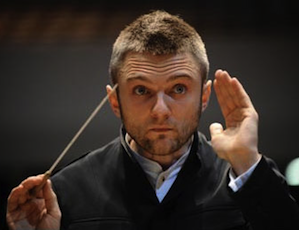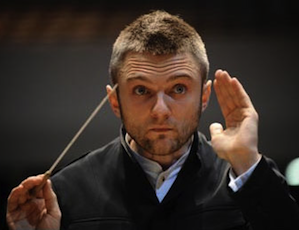
By the time British composer Benjamin Britten (1913–1976) entered the Royal College of Music (RCM) in London at age 17, he had several hundred compositions to his name in almost every musical genre. He wrote his first piece at age 5 and started taking private composition lessons when he was 13, but he didn’t feel confident enough to give any of his pieces an official opus number until 1932, when he was in his second year at the RCM and wrote Sinfonietta, a piece for five wind players and a string quintet.
It was right around this time that he was working on a double concerto for violin and viola, which for some reason he left unfinished. We may never know what prompted Britten to abandon this concerto and why he never made any attempt to have it performed, yet the highly detailed draft found its way into the hands of an English composer and music scholar, Colin Matthews, who worked with Britten during his lifetime. From Britten’s sketches, Matthews created a score in 1997, and he has stated that the outline was detailed enough to consider the piece to be “virtually 100 percent Britten.”
This rediscovered Double Concerto in B Minor for Violin, Viola, and Orchestra was the centerpiece of the San Francisco Symphony’s Thursday matinee concert (with repeats throughout the weekend), which also included Pacific 231 (Mouvement symphonique no. 1) by Arthur Honegger (1892–1955) and the Symphony No. 2 in D major, Op. 43, by Jean Sibelius (1865–1957).
SFS concertmaster Alexander Barantschik and principal violist Jonathan Vinocour played the soli in Britten’s double concerto and together with guest conductor Kirill Karabits they delivered the piece with great energy, sense of style and obvious enjoyment.
Barantschik, who also performed the piece at its S.F. Symphony premiere in 2004, displayed a little more bravado than Vinocour, though the two musicians were closely matched in their approach to Britten’s rich melodic lines. Their intimate musical dialogue, at all times right at the surface of the concerto’s open musical texture, was a pleasure to behold.
The concert opened with Honegger’s Pacific 231, written less than a decade earlier than Britten’s double concerto, but an entire musical world away. Supposedly inspired by a steam locomotive, it is a dense, industrial, percussive piece that barrels on until the machinery grinds to a halt on a gritty major chord. With his unassuming yet extremely clear style of conducting, Karabits exposed the inner mechanism of Honegger’s grim piece with all its nuts and bolts, fleshing out every bleak detail.
After intermission, Karabits applied a similar thoroughness to Sibelius’ Second Symphony, but here his attention to detail favored the warmth and sweeping magnificence of the piece, from the ebbing and flowing rhythms of the opening statement, to the grandiose, brassy chorales at the symphony’s end.
The ease and forthrightness with which Karabits took the San Francisco Symphony through the program’s extremely diverse worlds of sound made for a delightful afternoon, filled with gorgeous music.

